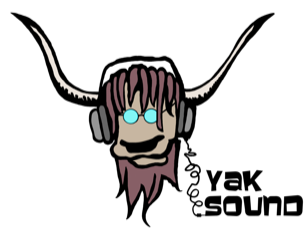Anyone who knows me can attest to the fact that I mix with a very straightforward style, using very few bells and whistles. It’s probably because I’ve been doing this work for decades (translation: I’m an old guy), so it stands to reason that this approach was developed long ago when a gate or compressor was a hardware piece that had to be manually inserted using insert cables. Very boring!
So these days, when I choose to incorporate a plugin on a channel or mix bus, I make certain I’m better off with it than without it. Long before there were multi-band compressors to wrangle that horrendous 2 kHz face-ripping tonality on a lead vocal, we older folks just mixed. Yes… we just mixed.
This may not be a very popular topic among the younger mix engineer population with the many choices, techniques and toys that are at their disposal these days, but I think it warrants a further look. With that in mind, please give this “seasoned” engineer a few minutes of your attention to present a “retro” way to mix. Stripping things down, stepping back, and re-evaluating the process.
Meeting The Objective
I’m going to suggest an experiment I’ve challenged my students with recently that’s called the “10-channel challenge.” The objective is to put together a kickin’ mix using only 10 channels from the 30 or more that are more than likely available to you.
Let’s begin by talking about the “Big 3” in retro mixing: the preamp gain knob, the high-pass filter (HPF), and the fader. I usually start with lead vocal, first removing all plugins along with any internal or outboard hardware inserts, then flattening all channel EQ and turning the HPF down all the way down to 20 Hz.
If it’s a multitrack recorded show, bring all of the faders down, hit that space bar and focus attention on the lead vocal input meter. If a few plugins that affect gain, the preamp gain may need to be readjusted, so start by bringing that knob down and then slowly turn it up until you see some solid input level without clipping or staying “hot” for too long. Next, bring the fader up slowly until you hear the vocal at a decent level in the PA system.
Now let’s bring the HPF up until most of the low-end “thumps and mud” are reduced to something we can feel good about. It may be tempting to pull a little bit of low-mid out of the channel EQ at this point, but instead, try bringing the HFP frequency up just a little bit more first. This single vocal may sound a little stark and inconsistent without a nice compressor and some FX to smooth it out, but hang in there. Bring the lead vocal fader down — we’re going to move on to some more channels out of our 10.
If it’s a pop/rock band, there are probably a couple of guitars. Beginning with either one, follow the previous steps. Again, set the gain knob and then slowly bring the fader up and roll up that HPF frequency until there’s a nice, full but not overly “thick” guitar tone. Rinse and repeat with the other guitar, then bass and keyboards and any other “must have” channels.
Moving Along
Once this has been accomplished, turn those faders down and then move on to the drum kit. We may have to bend the rules a bit here, especially with the kick drum, but let’s press on.
With all extra processing removed and the gain knob set nicely, try riding that fader up and try to get the kick to sound decent using only a little bit of channel EQ. Maybe a dip around 300 Hz and a boost around 5 kHz. Don’t overdo it. Move on to snare and get that sounding good with little or no EQ. Turn these faders down.
At this point you’ve flattened out and simplified your “allowable” 10 channels (or less). Now let’s do some mixing and see what it all sounds like when they’re all pieced together. If there are left and right keyboards, pan them all the way out and then pull the left and right single guitar channels out to 9 and 3 o’clock.
As you bring up all the faders and start blending, it might be tempting to start digging in some more, but try to stay disciplined and use only the gain knob, HPF and fader to alter the existing inputs as you begin to build a mix. If you get the same results I’ve witnessed on many occasions, you should be able to achieve a dynamic mix with 10 channels or less, and with very little EQ and no plugins or processing. Simple, powerful, phase coherent and unaffected.
Simpler can be better, at least as a jumping off point to removing some clutter and complication from the mix. Very retro!
Find out more about this topic from Jim via the recent Signal To Noise podcast (here) on PSW. And note that this article is also featured in the November 2018 issue of Live Sound International.





